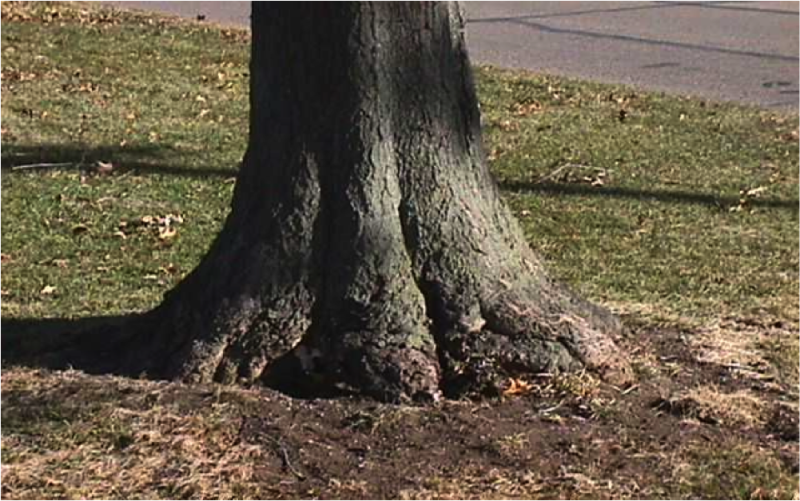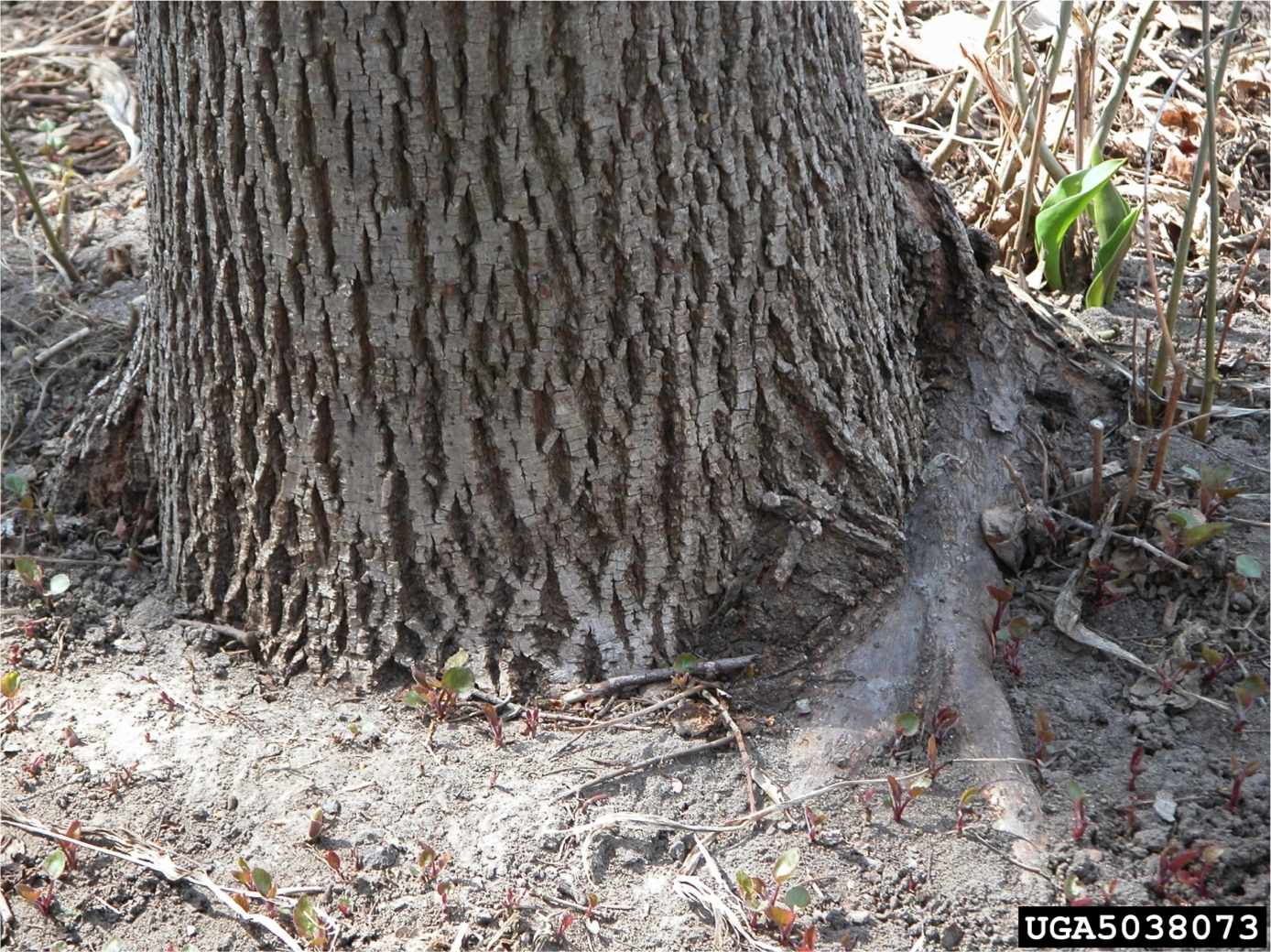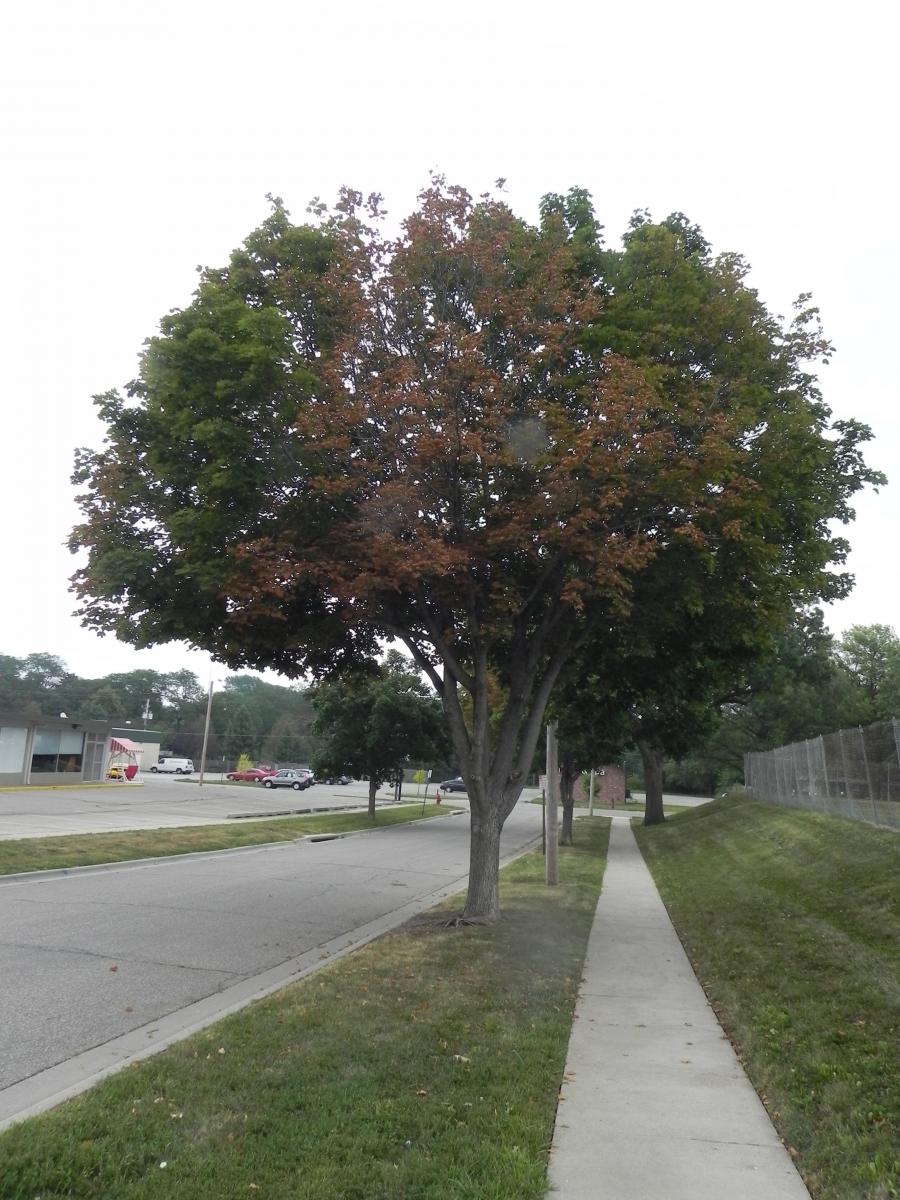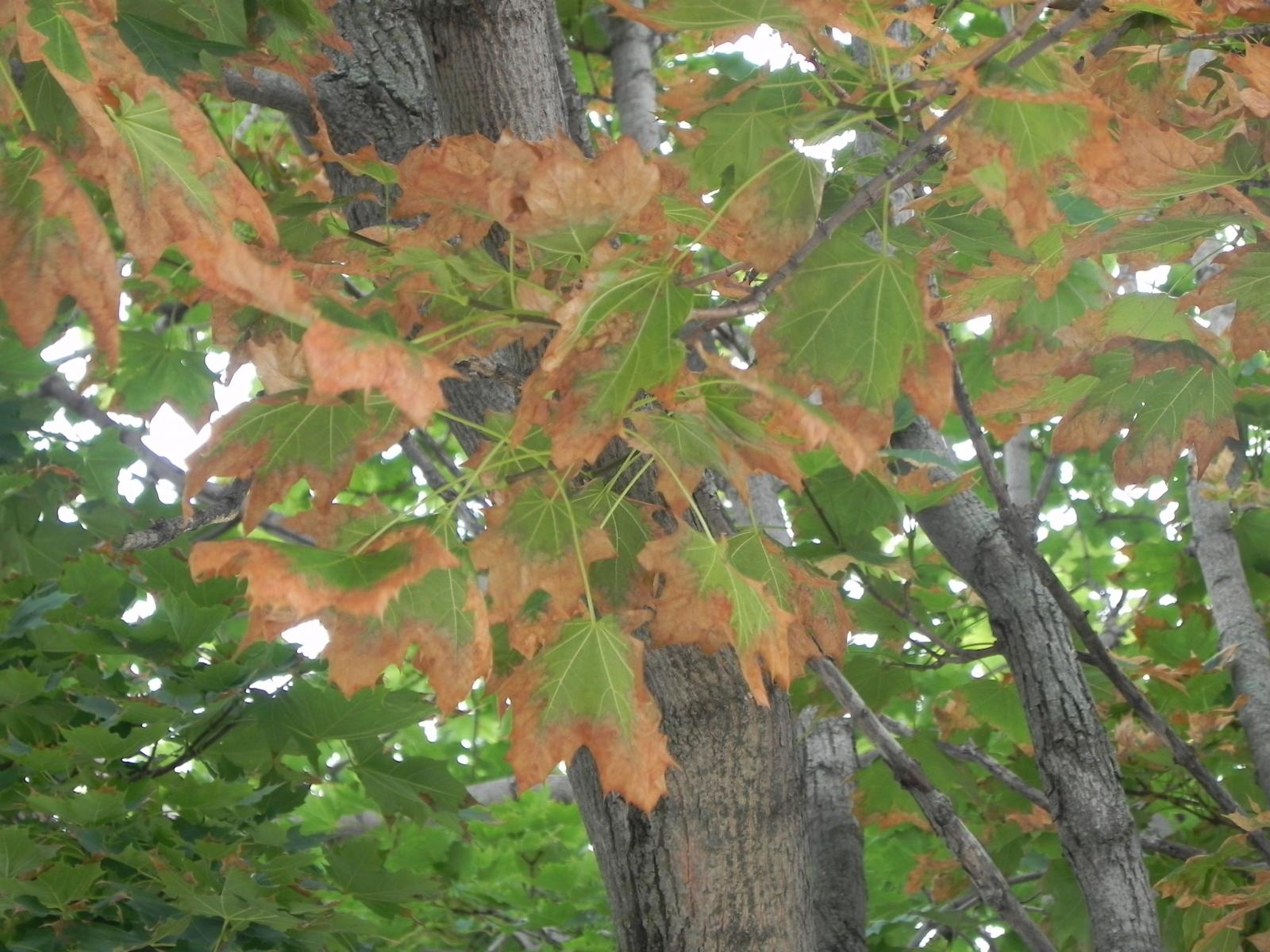
Stem girdling roots (SGR) are serious problems for trees. They slowly kill trees as roots grow in diameter and compress the trunk. Affected trees grow slowly, are often stunted, and are much more susceptible to secondary stressors like drought. They often have scorched leaves when summer conditions are hot and dry.
 SGR develop when young trees are grown in smooth plastic containers. Young roots grow quickly and when a root touches the side of a smooth pot it turns aside and begins to circle around the outside of the root ball. Even field grown trees are often started in pots, so you have to investigate very closely to find SGR that developed when trees were young.
SGR develop when young trees are grown in smooth plastic containers. Young roots grow quickly and when a root touches the side of a smooth pot it turns aside and begins to circle around the outside of the root ball. Even field grown trees are often started in pots, so you have to investigate very closely to find SGR that developed when trees were young.
Believe it or not, for this reason pot technology is a major concern for tree growers with the goal of eliminating the problems caused by stem girdling roots.
 SGR Management Begins with Shopping SmartFirst, choose small trees, 2-inch trunk diameter or less. They are easier to handle and it’s much easier to address stem girdling root problems in small trees. They also recover more quickly from transplanting than large trees, and typically catch up, then outgrow the larger tree due to increased vigor. There is no easy way to inspect the root system of a B&B or spaded tree for SGR. You may be able to find some by looking at the top of the root ball, but others buried deeper in the root system will be impossible to find.
SGR Management Begins with Shopping SmartFirst, choose small trees, 2-inch trunk diameter or less. They are easier to handle and it’s much easier to address stem girdling root problems in small trees. They also recover more quickly from transplanting than large trees, and typically catch up, then outgrow the larger tree due to increased vigor. There is no easy way to inspect the root system of a B&B or spaded tree for SGR. You may be able to find some by looking at the top of the root ball, but others buried deeper in the root system will be impossible to find.
Next, at the nursery ask for trees grown in grow bags, RootMaker® pots, or other containers designed to minimize circling roots. Grow bags are made of fabric which traps the tip of a new root, preventing it from circling. Once the root tip stops growing, additional branching develops along the length of the root resulting in a denser, fuller root system overall. RootMaker® pots are design to air prune roots to prevent them from circling.
If you have to purchase a tree in a smooth plastic container, inspect the root ball for circling roots. If you’re not comfortable doing it yourself, ask a garden center employee to gently remove the tree from it’s container. DO NOT buy trees with a heavy mass of circling roots. If the outside of the root ball is completely matted with roots, look for another plant! A few roots growing around the outside of the root ball can be handled, but not a dense, crowded mass.
 Eliminate SGR Before PlantingHopefully you’ve chosen to plant a small tree, so remove the tree from its container. Here are two techniques that can be used at planting to eliminate SGR, I’ll call them the bare root and root shearing techniques.
Eliminate SGR Before PlantingHopefully you’ve chosen to plant a small tree, so remove the tree from its container. Here are two techniques that can be used at planting to eliminate SGR, I’ll call them the bare root and root shearing techniques.
Bare Root Technique – It’s best to use this technique with dormant trees, although it will work with leafed-out trees if you’re very careful to keep the roots moist at all times.
This is my favorite technique for several reasons. First, it’s the best way to completely eliminate stem girdling roots and planting depth problems at the same time. A secondary benefit is this technique also eliminates watering problems that arise when two different soil types are present, such as your landscape’s native soil and what’s in the tree’s container.
Gently wash the root ball to completely remove all soil. Once the roots are exposed, carefully spread them out and prune away any that circle the trunk. Again, make absolutely sure the roots stay wet at all times during this process until the tree is planted.
Do not amend the soil in the planting site. Set the tree on top of a soil mound in the planting hole and spread the roots out. Don’t bend the roots to make them fit. Either dig the planting hole wider to accommodate long roots, or make a clean cut to shorten the root to fit the hole. Add backfill soil in layers, and use water to help settle soil around the roots. Make sure the tree’s first major root is just beneath the soil surface.
 Root Ball Shearing Technique – New research by Dr. Edward Gilman, University of Florida, suggests shearing off the outer inch of a tree’s root ball to remove circling roots is a better technique than making several slices down the root ball’s sides. The result is elimination of SGR on the outer edge of the root ball and increased root growth.
Root Ball Shearing Technique – New research by Dr. Edward Gilman, University of Florida, suggests shearing off the outer inch of a tree’s root ball to remove circling roots is a better technique than making several slices down the root ball’s sides. The result is elimination of SGR on the outer edge of the root ball and increased root growth.
Use a sharp handsaw, on both the sides and bottom of the root ball, to slice away the outer edge. Remove soil from the top of the root ball to determine planting depth, and remove any circling roots found before planting. After root ball shearing, planted trees would be watered deeply and irrigated regularly until the tree is well established.
If You Hire Someone to Plant
Before purchasing ask about the nursery’s planting techniques and explain how you would like the tree planted. You may need to pay more for extra time spent on planting, but rest assured it will pay off in a healthier tree. Plan to be present when the nursery comes to plant your tree and make sure they follow your instructions.
Image credits
- Healthy tree with good root flare showing at the soil surface. Credit to Sarah Browning, Nebraska Extension
- A surface girdling root. Image by Joseph O'Brien, USDA Forest Service, Bugwood.org.
- Example of a tree with severe stem girdling roots. Image by Sarah Browning, Nebraska Extension
- Stem girdling roots make trees much more susceptible to drought stress. Image by Sarah Browning, Nebraska Extension
- Close up of leaf scorch symptoms in tree suffering from stem girdling roots and drought. Image by Sarah Browning, Nebraska Extension